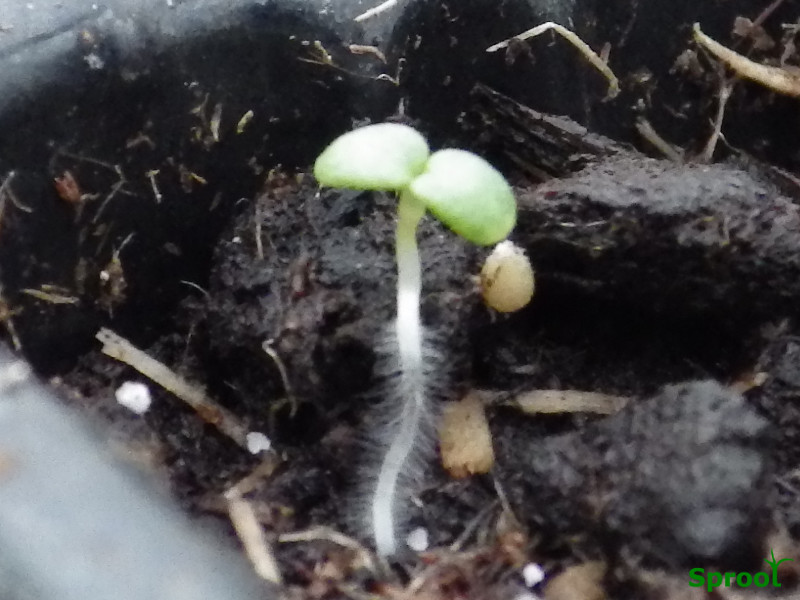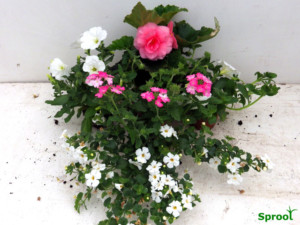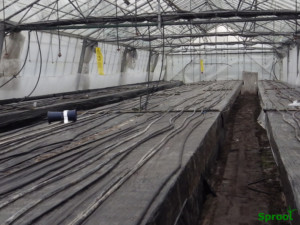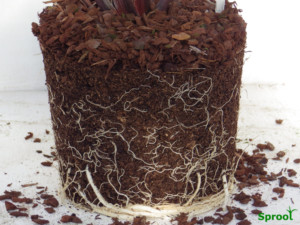Seed sowing needs preparation, a bit like bringing up a baby.
A baby needs the correct food, clothes and conditions to thrive, but what they need changes as they grow.
It is the same with seeds, they need a nursery to start with, warm but not too hot, a cot not a double bed, baby food not takeaways and constant attention.
Eventually they grow and want their own room and can start to fend for themselves.
What do I need to sow my seeds
Firstly you need Information.
Look at the packet of seeds or check online and find out what they prefer.
First check what temperature they need to germinate, Can you grow them outside or will it need to be started inside.
Most seeds are classed as Hardy, Half hardy or Annual.
Annual seeds nearly always should start off inside the house or greenhouse.
Half hardy seeds can start outside, but are often sown inside, this will give them more time to grow improving the quantity of the crop and flowers.
Hardy seeds can sown outside but are often sown inside to protect the seedlings from bad weather, pests and diseases.
Now with the correct information you have a choice, do you sow inside or outside.
Inside would be a house, heated greenhouse or heated propagator.
Outside might be direct into the ground or seed trays in a unheated greenhouse or grow house.
When to sow seed indoors
Can you start sowing inside ? It depends on your situation, can you provide the right temperature and will there be enough sunlight for them to grow when they germinate. Then you also need to have you enough room to grow them until it is safe to plant outside.
If you can’t sow them inside, don’t worry you can sow them later, when the weather is warmer outside.
What do I need
It depends on what you can provide for your baby plants, the house is already warm but your seedlings need access to plenty of good sunlight when they grow. It is this aftercare that will determine how early you can start.
If you have a heated greenhouse, conservatory or enough space and light in the house, a big south facing window sill perhaps, you can sow some things indoors as early as January (a bit early) or February.
You could invest in some LED grow lights, it can be cheaper to grow seedlings indoor in a warm house rather than heat a greenhouse.
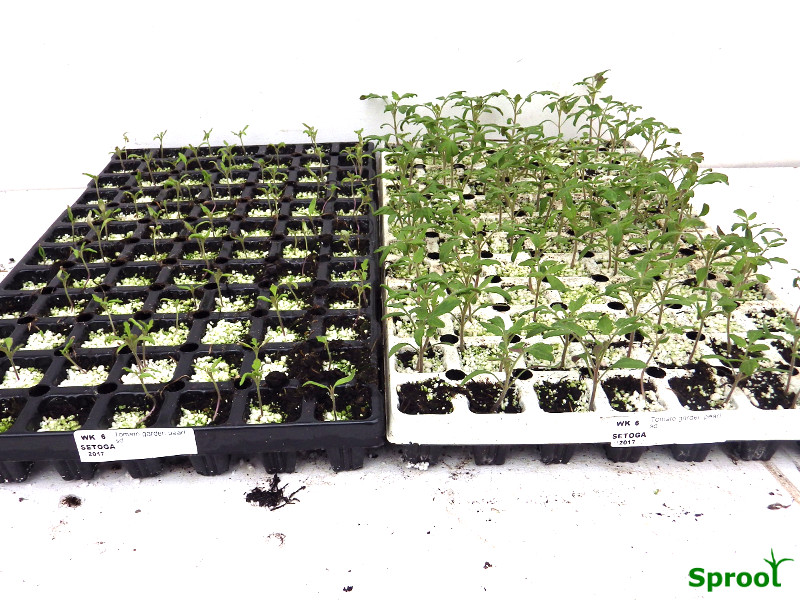
Buying LED grow lights
How to see the wood from the trees How to buy and compare different led lightsThere are 3 main ways of comparing them: 1 How…
What to start inside.
House plants as they can spend all of their life indoors
Summer plants using the heat of the house we can start our summer plants a bit earlier for planting out later this will give us bigger plants and more flowers or fruit.
Vegetable plants if you sow them indoors for planting out later you can get some early crops.
Most crops and flowers that start off indoors will be about 8 weeks old when you need to move them outside. Before you sow your seeds you should work 8 weeks back from when you think the risk of frost has passed, so you can move them outside before they get too big.
If you think you can safely plant out in
Early May then sow mid March
late May would be early April
Early June then sow mid April (Scotland)
There is a temptation to start early but remember the light levels and day time temperatures are increasing every day and even quite late sowing can quickly catch up.
How to sow the seeds
Seed sowing, there is no shortage of expert advice, some of it useful, a lot of it is out of date, I have tried to apply some common sense and suggest the method most likely to succeed .
What to sow them in.
Seed sowing trays.
expert advice suggests
“Small seeds are generally sown into shallow seed trays and pricked out (transplanted) into larger pots while still at the seedling stage”
On commercial nurseries this would never happen now, we only use plug trays in a wide range of sizes, even tiny seeds like begonia are sown in plug trays.
This avoids the difficult pricking out stage where most plant losses happen. Plug trays can stop diseases from spreading. Please invest in some plug trays, your friendly grower retailer may sell some good second-hand trays.
“Slightly larger seeds can be sown into individual modules in a modular plug tray, so limiting transplant shock”
We use larger plug trays to sow the seeds so this is good advice.
“Large seeds can be sown individually into 9cm (3.5in) diameter pot”
This is reasonable advice but in the space of one 9cm pot you could get 4 or 5 plug plants increasing the number of plants you can grow in your valuable heated space.
“Old containers should be thoroughly cleaned before use”
This one is true a lot of problems can be stopped by thorough cleaning, add a little bleach and then make sure they are completely dry before using. We have reused our plug trays some over 8 times without any problems.
Compost
Do I need a special compost?
If possible buy seed sowing compost this will be finer in texture with no large lumps and have less food to damage young roots. More likely you will only have multipurpose compost or other potting composts, you can still use it but try to add 10-15% perlite and mix in carefully. When you are ready to sow use a thin layer of perlite on the surface for sowing
Fill your tray or pots with compost, tap gently but don’t over firm, for small seeds add a thin layer of perlite or vermiculite, then water thoroughly, we will then sow on the wet surface. I know this is not the normal advice but we find the moisture in the compost is enough to start the seeds growing. If you sow then water it is very easy to wash the seeds away or into clumps.
Sowing the seeds.
expert advice suggests
“Many seeds require specific sowing treatments, such as light-exclusion or scarification (scratching or nicking the seed coat), so check seed packets for specific instructions“
In our experience very few popular seeds need any special treatment, read the packet to be sure, but a lot of the packet advice is confusing or vague.
There is a very good guide to tricky seeds on the jellito website.
For instance you might be told to nick sweetpea seed to improve germination but no commercial nursery would bother and still manage to germinate many thousands of kilos with no trouble.
“Small seeds can be scatter-sown thinly over the surface of the compost. Very small seeds can be mixed with fine, dry sand before sowing to obtain an even distribution. After scattering, sift a layer of compost or fine vermiculite over the seeds”
In practice it is very difficult to scatter small seeds thinly even in dry sand (if you can find any) it is better to put a layer of vermiculite or perlite down, water in carefully, then using a small thin cane or stick touch it on the damp covering then back into the seed, sowing with a damp stick, each time you touch the covering, some seeds will be left behind allowing you to sow little clumps of seed in each plug cell or spaced in a tray.
“Larger seeds can be station-sown, pressing each seed individually into the surface of the compost a couple of centimetres (1in) apart in a seed tray. If using a modular plug tray, sow one seed per plug. Sometimes, two seeds are sown per plug and the strongest seedling selected, discarding the weaker one”
This is good advice using the sowing with a damp stick method you can pick up quite large seeds for sowing individually, however it is quite common to multi sow seeds sometimes a little clump of plants creates a better effect when planted out.
“Label, lightly water again and cover with clear polythene or a sheet of glass, or place in a heated propagator with a lid. Maintain a temperature of around 18ºC (64°F), unless seed packet states otherwise”
Always remember to label your seed sowing, they all look the same for quite a long time. You may have a colour scheme in mind and need to know what colour they will turn out. As we mentioned before, watering after sowing can cause problems, washing the seeds about. Always cover with polythene or glass to keep the seeds damp. I would keep them in the dark to avoid the sun drying them out. The temperature is also important 18º C is okay but 22-25 C would be better, even plants that prefer a lower temperature will germinate but much faster.
How deep do I sow them, you can be guided by the size of the seed and the old rule of sowing 1-2 times the depth of the seed is a good guide. Large seeds peas and beans can be pushed into the compost.
I would suggest sowing most seeds on the surface and keep them covered with polythene, until you see the roots starting then a thin covering of perlite will protect them while they grow.
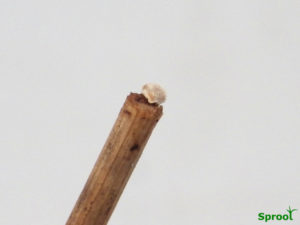
Seed sowing with a damp stick
A simple way to sow seeds singly or in clumps using only a damp stick. Sowing the seeds. Do I need a special compost?If possible…
When the majority have started to germinate move them into the light or they will stretch and cover lightly with perlite and polythene.
Your seedlings need plenty of light as they grow, this might be in the house with some lights but often they can move into a greenhouse or grow house if the weather is okay.
Aftercare
This is a crucial stage, the roots are very small and need moisture but over watering is also dangerous as the roots need air pockets to grow and diseases can spread in the water.
A careful light watering is better than drenching and often standing the seedlings in a tray of water to allow the water to seep upwards can be better than overhead drenching.
Try to water on sunny days, early in the morning, to allow the foliage time to dry out quickly. Also avoid very cold water as it will chill the seedlings.
We should gradually reduce the temperature we grow our seedlings at.
House plants are best kept at room temperature.
Summer plants (bedding) will eventually end up outside so we can reduce the temperature gradually down to 10-14C (normal summer weather) eventually they can spend the day outside when the weather is warm.
Outdoor plants can move outside much quicker but you should avoid frosty or very cold windy weather.
Seed tray after care
If you have sown your seeds in a seed tray you will need to Prick them out.
To prick out seedlings, don’t wait for them to become overcrowded, loosen the compost around their roots with a blunt stick or ‘dibber’ and lift the seedlings out by holding the leaves
Try to preserve as much compost around the roots as possible and make a hole for the seedling in its new pot of compost before dropping it in, a slight press in is usually required.
Plug plants aftercare
Leave the seedlings in the plug tray until there is enough root formed to allow you to pop them out by pressing the tray slightly or pushing up with a small stick.
Small plugs will need potting on into larger pots. Larger plugs can be big enough to plant directly into the ground (vegetables for instance) or final pots like hanging baskets or patio pots.
It is also possible to hold plants in plug trays for a long time almost in suspended animation, keep them watered, use a very week feed and they can hold still, but they will spring into life when potted.
Outdoor sowing
what to sow outdoors
Tough annuals, biennials and herbaceous plants can be grown from seed outdoors.
Vegetables are often sown outside, beans, carrots, onions, lettuce and peas can also be grown outside from seed.
Sowing seed outdoors, directly into final growing places, or into plug trays for planting later is ideal for gardeners who do not have much room to raise seed indoors in trays or propagators.
You can’t start seed sowing as early in spring as when you sow indoors, you have to become in tune with nature as each spring is different and you will find you develop a unhealthy obsession with the weather forecasts as you try to plan your seed sowing.
When to sow seed
Your seed sowing is dependent on the temperature of the soil.
We can increase the temperature of the soil, with the gardeners best friend, thick black polythene. If you cover the soil in advance the polythene will allow the soil to warm up in the sun and store the heat during the night, with the advantage of keeping it dry, you can sow your seeds at anytime even after heavy rain. After you have sown your seeds cover with the polythene and check every day for the emerging seeds then remove, you can then cover with fleece or insect protection netting.
check the seed packet for the best time to sow, as it does vary.
How to sow seed
Seed sowing is very easy just think of all those weed seeds that manage to germinate without any help.
With our indoor seeds our compost was a ready made seed bed, soft crumbly and damp, when we sow outside we need to try and recreate the same conditions.
Make sure you clear any weeds before starting then use a rake to loosen the surface of the soil, we want 1 or 2″ of soft soil which should break up into little crumbs when you rake it. If you can’t get the soil to break up, it may be too wet and you should leave it until it drys out. In the summer it may be too dry and need some water to help break it up.
When you have a nice crumbly surface we can then start sowing.
A short cut is to grow some plug plants as you only need to make a small hole for planting, missing out all the raking.
How deep do I sow them, you can be guided by the size of the seed and the old rule of sowing 1-2 times the depth of the seed is a good guide.
With some seeds we can just sprinkle then on the surface and rake it in, grass seed springs to mind, you can use this technique for tough summer flowering annuals.
For vegetables you normally sow them in straight lines. You can create a straight line with a board just press into the surface to make a depression, another way is to use the corner of a hoe or spade to draw out a line, one of the best ways is to cut a groove in a old brush handle and using a line you can slide it up and down the string to create a uniform depression.
Water the row before sowing, we can then be sure the seeds are in contact with damp soil. Thinly scatter the seed into the depression. Don’t go mad, as plants will need room to grow later, check the packet. We will slightly over sow as this will allow us to select the best plants later. When they are 1-2″ high you can pull some surplus plants out to allow the plants room to grow. If you look at the packet there will be a final spacing suggestion. If you are not sure don’t worry plants are very adaptable and you can always pull surplus plants out later.
When the seeds are sown use a rake to gently cover the seeds with soil, filling the depression back in again. I would cover with black polythene to keep the soil warm and it will stop weeds germinating, just remember to check every 2-3 days.
Remember to label the row and write down in a diary what you have done, it helps with planning next year.
When the seeds are through it is a good idea to cover with fleece or insect protection.
What could go wrong
Heavy rain can puddle the surface making it harder for the seeds to grow through and it will dry out into a crust, using polythene covers will help.
Your seedlings can dry out in hot weather and may need regular watering, using polythene covers will help.
Slugs and snails, every garden has them, you will need to protect your seedlings. Use some slug control before you start sowing this will reduce the population before the seeds start germinating.
Birds can pull the seedlings out looking for grubs.
Pests like young plants so watch out for beetles and flies, fleece and insect covers are worth using. Some are crop specific i.e. carrot fly only attacks carrots.
Mice have a very keen sense of smell and can soon find your newly sown seeds, use a mouse trap or traps to catch them before sowing. We often leave little piles of peanuts about and when they disappear you can be sure mice are about.

